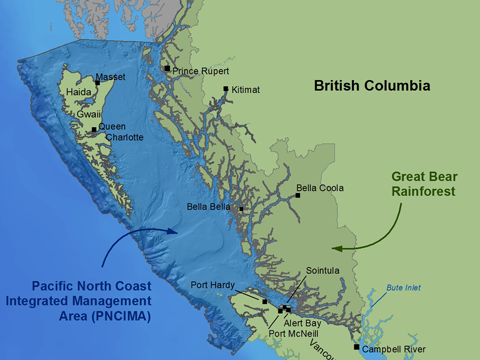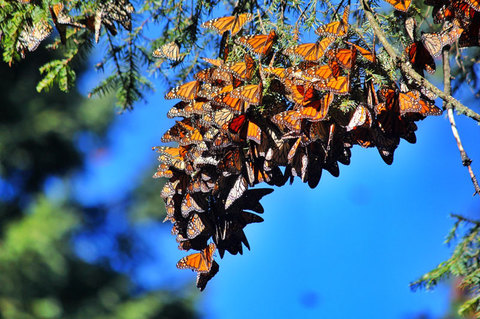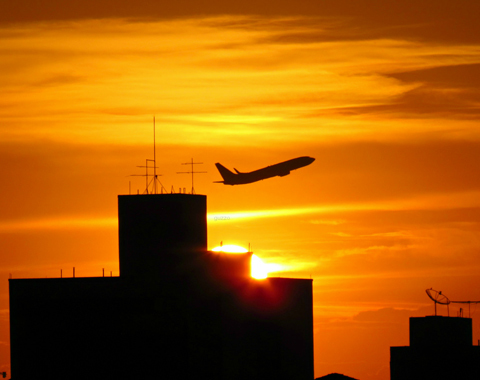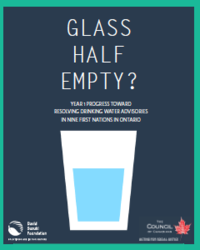David Suzuki's Blog, page 16
February 17, 2017
A carpooler's etiquette list

Make ground rules about eating, drinking, music, phone calls etc. during the commute. (Credit: Washington State Department of Transportation via Flickr)
It's almost two decades since I was in a regular work carpool. Our commute was one hour each way. We were a group of five, so each person drove one day a week.
Carpooling is cost-effective and reduces carbon emissions. If you can carpool, here's an etiquette list to help you all have a smoother group ride:
Select a convenient meeting/pick-up spot that's safe and easy to get to by bike or public transit
Show up on time
Share a contact information sheet
Make group agreements or ground rules about eating, drinking, music, chatting, phone calls etc. during the commute
Keep a schedule and track driver turns
Go scent-free
Drive smart
Agree on a cost per trip for those without vehicles
Maintain your vehicle (check gas, air tire pressure, oil, emergency kit, etc.)
Take your turn in the uncomfortable seat
Save personal errands for your own time
Keep your car interior tidy (remove garbage, dog hair, etc.)
Take your stuff (garbage or personal belongings) with you
Call in sick (or work from home) to avoid spreading colds and viruses
Speak openly, but be patient and respectful
Don't disband at the first sign of disagreement
I'm sure some things have changed since I carpooled. Please, add your tips in the comments!
What are your secrets to a successful carpool?
Sincerely,
Lindsay Coulter, a fellow Queen of Green
Hey! Want more DSF? Join David Suzuki on Facebook

February 16, 2017
Hecate Strait marine protection good for environment and fisheries
VANCOUVER -- Today's announcement by Fisheries, Oceans and Canadian Coast Guard Minister Dominic LeBlanc to protect rare, delicate glass sponge reefs in B.C.'s Hecate Strait is a strong step toward meeting international biodiversity commitments and ensuring the ecosystems that underpin fisheries are better managed for decades to come.
"The sponge reefs that cover roughly the same area as the Lower Mainland are globally unique, and their contribution to overall ocean health and fisheries is only beginning to be understood," said Foundation senior research scientist Scott Wallace. "This marine protected area not only safeguards the sponge reefs but also fisheries that are inextricably linked to a healthy ecosystem."
Glass sponge reefs were thought to have been extinct for 60 million years until scientists discovered them in the 1980s in B.C.'s coastal waters. The extremely fragile animals use silica dissolved in seawater to manufacture skeletons.
"The minister's announcement signals to other countries that this unique marine reef is something Canadians value as a precious part of our natural heritage," Wallace said.
- 30 -
Media Contacts:
Scott Wallace, Senior Research Scientist
Cell: 778-558-3984
Theresa Beer, Senior Communications Specialist
Cell: 778-874-3396
Hey! Want more DSF? Join David Suzuki on Facebook

Government must do more to address First Nations' water woes

(Credit: Sam Cox via Flickr)
Neskantaga First Nation in Ontario has had to boil water since 1995. "We're over 20 years already where our people haven't been able to get the water they need to drink from their taps or to bathe themselves without getting any rashes," Neskantaga Chief Wayne Moonias told CBC News in 2015. Their water issues have yet to be resolved.
They're not alone. In fall last year, 156 drinking water advisories were in place in First Nations in Canada. More than 100 are routinely in effect -- some for years or decades. According to a 2015 CBC investigation, "Two-thirds of all First Nation communities in Canada have been under at least one drinking water advisory at some time in the last decade."
Water advisories vary in severity. A "boil water advisory" means residents must boil water before using it for drinking or bathing. "Do not consume" means water is not safe to drink or consume and a "do not use advisory" means water is unsafe for any human use.
Water on First Nations reserves is a federal responsibility, but "severe underfunding" (in the government's own words) for water treatment plants, infrastructure, operations, maintenance and training has led to this deplorable situation. Canada has no federal standards or binding regulations governing First Nations' drinking water.
After years of pressure from First Nations and Indigenous and social justice organizations, the Liberal party promised in its 2015 election campaign to end all First Nations' long-term drinking water advisories within five years of being elected. In 2016, the new government's budget included $1.8 billion over five years, on top of core funding for First Nations' water infrastructure, operations and management. Funds have gone to help Neskantaga and other communities, but money's not enough. If the federal government is to fulfil its commitment to ending advisories in five years, it must reform its system.
The David Suzuki Foundation and Council of Canadians have published a report card rating government's progress on meeting its commitment in nine First Nations in Ontario, which has the highest number of water advisories in Canada. The "Glass half empty?" report found advisories in three communities have been lifted or will likely be lifted within five years. Efforts are underway in three other communities, but uncertainty lingers about whether they'll succeed within the five-year period. Three others are unlikely to have advisories lifted within five years without reformed processes and procedures. And in one community that had its advisory lifted, new drinking water problems emerged, illustrating the need for sustainable, long-term solutions.
It's unacceptable that so many First Nations lack clean water and face serious water-related health risks -- especially for children and the elderly -- in a country where many people take abundant fresh water for granted. The United Nations recognizes access to clean water and sanitation as human right, and Canada has further obligations under the UN Declaration on the Rights of Indigenous Peoples.
The report card concludes that the system for addressing unsafe drinking water is overly cumbersome and must be streamlined, First Nations must have more decision-making power to address community-specific drinking water issues, and government must increase transparency around progress and budgetary allocations. It calls on government to redouble its efforts to advance First Nations-led initiatives, fulfil its fiduciary responsibility to First Nations, respect the United Nations Declaration on the Rights of Indigenous Peoples, and ensure the human right to safe and clean drinking water.
The federally funded Safe Water Project is one example of a First Nations-led approach. The Keewaytinook Okimakanak Tribal Council started the initiative in 2014 in response to long-term advisories in four of six member nations. The project keeps management at the community level and includes training and certification of local water operators, operational support while local water operators pursue certification, and remote water quality monitoring technology.
The project's success illustrates the benefits of a local approach. Community-specific, traditional and cultural knowledge are integral to developing lasting solutions. Because the federal government holds the purse strings, it calls most of the shots and often overlooks knowledge held by community members. This needs to change.
Clean drinking water on reserves is not just an Indigenous issue. It's a human right and it should concern all of us.
Hey! Want more DSF? Join David Suzuki on Facebook

February 15, 2017
Keeping oceans wild means leaving Wild West approach behind

(Credit: Living Oceans Society)
Glass sponge reefs, gigantic container ships, climate change, humpback whales, rights and title claims, commercial fishing, kayakers, tiny islands with millions of nesting seabirds, recreational fishing lodges, marine mammal breeding grounds, renewable energy sites--these are just a few of the many elements competing for space in Canada's Pacific coastal waters.
The good news is that the Government of Canada announced today that it will work with the Province of B.C. and coastal First Nations to take better care of these precious coastal ecosystems and the communities that depend upon them.
Until now, the federal government has not focused on overall impacts of human activities in coastal waters. Fortunately, when it walked away from the marine planning table in 2012, 18 coastal First Nations and B.C.'s government stepped into the vacuum to create plans on their own.
It's a good thing they did.
Imagine a city where things were built willy-nilly: sewage treatment plants next to hospitals, schools beside shoulderless highways and residential areas without parks or greenspaces.
That pretty much describes what's happened with our coastal waters. Although a wild western ocean is good, a Wild West approach to ocean planning is not!
Good planning may not get headlines, but ensuring that shipping lanes do not endanger feed-and-breed marine wildlife areas and that tourism operators and industrial zones don't get in each other's way is crucial for nurturing healthy coastal ecosystems.
Kudos to the federal government for recognizing that bringing people together might be a lot of work, but our amazing and intricate coastal waters and the communities that live alongside them are well worth the effort.
It's a day to celebrate for oceans.
Hey! Want more DSF? Join David Suzuki on Facebook

How to garden for butterflies year-round

Some butterflies rarely visit flowers. They prefer mud, poop (a.k.a. "scat" or "dung"), sap and rotting fruit. (Credit: Annie Spratt)
Want to help butterflies? Think beyond providing flowers for nectar in the height of summer.
Many butterfly species we see in Canada don't migrate. You can provide habitat and food for their entire lifecycle -- eggs, larvae, pupae AND adults -- throughout the year. You'll need:
Host plants. Adults need a place to lay eggs where their caterpillars will forage. (Plant species that will get eaten and not just look pretty!)
Mud puddles. Some butterflies rarely visit flowers. They prefer mud, poop (a.k.a. "scat" or "dung"), sap and rotting fruit.
Blooms from spring through fall. Don't limit your garden to an end of July color extravaganza. You'll need a diversity of native nectar plants to flower over a few months.
Overwintering habitat. Consider not raking leaves to provide a butterfly nursery! Most butterflies in Canada overwinter as caterpillars, others as pupae. A few species winter as adults, hibernating in hollow trees, under bark and firewood piles, or in garden shed cracks and crevices. Few spend winter as eggs.
Sunshine. Make sure you (or your neighbours) have sunny spots.
Nectar plants. Most butterflies will feed from more than a few plant species.
Think about the role of your yard. Is it a habitat source (high quality patch that supports population increases)? Or is it more of an island? Some yards can provide for one butterfly species' entire life cycle. Some are disconnected from other habitat patches. Walk around the block and view your neighbourhood through a butterfly's eyes. Chat with your neighbours and see what they're planting. Note possible connecting corridors between butterfly-friendly patches. Can schoolyards, boulevards and local green spaces where you live help support butterflies?
Get to know native butterfly species. Not every person in Canada can create monarch butterfly habitat (e.g., they aren't native to Vancouver Island).
What will you do this season to help butterflies?
Sincerely,
Lindsay Coulter, a fellow Queen of Green
Hey! Want more DSF? Join David Suzuki on Facebook

Canada takes small step for ocean health and marine protection
VANCOUVER -- Canada's announcement today to ratify a plan that guides how people use and protect its North Pacific coastal waters marks a small but positive step toward meeting biodiversity targets and supporting coastal ecosystems and communities, the David Suzuki Foundation said.
"This conservation framework has been 10 years in the making," said Foundation science projects manager Bill Wareham. "Moving ahead is an important step to prevent human-based ocean activities from harming one of the world's richest marine biodiversity areas."
Fisheries, Oceans and Canadian Coast Guard Minister Dominic LeBlanc is also expected to announce a marine protected area for Hecate Strait's glass sponge reefs tomorrow.
"These prehistoric reefs are considered one of the Pacific Ocean's most awe-inspiring treasures," Wareham said. "Protection will help ensure the reefs survive and provide vital habitat to marine life."
Although most Canadians are familiar with city planning, few are aware of how activities are zoned and regulated in oceans. The initiative -- in what is known as the Pacific North Coast Integrated Management Area -- maintains ecosystem health and biological richness as the foundation of all marine-use decision-making.
"This approach highlights the dependency of human communities and economies on healthy ocean ecosystems," Wareham said. "We know that human activities must respect biological limits if we hope to support cultures, communities and economies over the long term."
Ratifying the plan and establishing the new protected area bring Canada closer to meeting international biodiversity commitments, including the responsibility to protect at least 10 per cent of coastal and marine areas by 2020. The initiative supports communities that depend on the marine environment for fisheries, sustainable aquaculture and tourism. It also respects Indigenous rights and title and is designed to use traditional knowledge in managing marine resources.
Managing this ocean area's rich biological wealth to support local livelihoods and future generations is one of the most important issues facing B.C.'s coastal communities. "With Canada, B.C. and First Nations co-governing, we're hopeful this ocean area can support some of the best-managed and productive marine areas anywhere in Canada," Wareham said.
- 30 -
Media Contacts:
Bill Wareham, Science Projects Manager, Western Canada
Cell: 604-928-1150
Theresa Beer, Senior Communications Specialist
Cell: 778-874-3396
Hey! Want more DSF? Join David Suzuki on Facebook

February 9, 2017
Monarch butterflies still need your love

Monarch butterflies in Sierra Chincua butterfly reserve in Michoacan, Mexico.
A couple of weeks ago, it was raining monarch butterflies. I was visiting a hilltop sanctuary near Mexico City where monarchs from Canada and the U.S. Midwest spend their winters. The tiny critters cling to branches in clusters so dense they bend the bows of massive fir trees. When the sun begins to warm up the forest, they start to flit about, often dropping momentarily to the ground. (I'm not kidding; it really feels like it's raining butterflies! See the video below.)
The visit was truly mind-blowing -- the longest insect migration on Earth by colourful critters weighing less than a paperclip, meandering across a continent before landing in small patches of alpine forest they've never been to. (It was their great-great-great grandparents that left the reserves last year.)
Today, representatives from the government of Mexico announced that monarch butterfly populations had dropped by 27 per cent compared to last year. This isn't entirely surprising, as a tragic storm wiped out more than six million butterflies mere days before they departed from Mexico on their 5,500-kilometre, multi-generational journey.
However, this represents a more than 80 per cent drop in the population in the past twenty years. Severe storms and the virtual eradication of milkweed by prolifigate use of an herbicide called glyphosate, which has virtually eradicated monarch's host plant milkweed from much of the species' breeding grounds, and illegal logging in Mexico has created a perfect storm of extinction, leading scientists to speculate that the species may be at risk of extinction.
Total bummer, right? Well, thankfully, there are a bunch of things you can do to help.
First, I encourage you to find out more about amazing local groups like Alternare that have been working on the ground in the communities around the reserves in Mexico for decades -- and could really use your support!
If you live in Canada, be sure to watch for the announcement next week about our new Butterflyway Project. We're aiming to help bring butterflies home to cities across the country, starting in five cities in 2017.
For actions you can do in your neighbourhood, sure to sign up for our Monarch Manifesto to join more than 10,000 others that have committed to helping monarchs and other critters in their communities.
Hey! Want more DSF? Join David Suzuki on Facebook

Understanding climate change means reading beyond headlines

(Credit: Ana Guzzo via Flickr)
Seeing terms like "post-truth" and "alternative facts" gain traction in the news convinces me that politicians, media workers and readers could benefit from a refresher course in how science helps us understand the world. Reporting on science is difficult at the best of times. Trying to communicate complex ideas and distil entire studies into eye-catching headlines and brief stories can open the door to misinformation and limited understanding.
Recent headlines about a climate study, "Shifting patterns of mild weather in response to projected radiative forcing", in the February 2017 issue of Climatic Change illustrate the predicament. Some news outlets implied the study showed countries such as Canada and the U.K. would benefit from increasingly frequent "mild weather days" brought on by climate change. Many failed to convey the true take-home message: Climate change will have devastating consequences for human civilization.
Just ask the study's author, Karin van der Wiel, research scientist at the Royal Netherlands Meteorological Institute. She studied the frequency of mild weather days as a postdoctoral research associate at Princeton University and the U.S. National Oceanic and Atmospheric Administration's Geophysical Fluid Dynamics Laboratory. She found a few countries, mostly in the mid-latitudes, will experience slightly more frequent mild weather -- defined as days between 18 and 30 C with less than one millimetre of rain and dew point temperature not exceeding 20 C. But that's not the whole story.
"The climate is changing in many places over the world and these changes are ongoing now," Van der Wiel said in an email. "Globally, mild weather is decreasing and in many locations summers are going to be increasingly too hot and too humid to be considered mild. These are not desirable changes."
Van der Wiel chose to examine climate change and mild weather rather than extreme events such as floods, wildfires and drought to make it easier for people to relate to the issue and inspire them to learn more.
"I am happy the research was picked up so widely; that way more people hopefully will learn that climate is changing the weather near them and in the coming decades," she said, adding, "mild weather is not the only important thing in climate change, and therefore the other, more alarming, aspects of climate change should not be forgotten."
Van der Wiel points out that mild weather isn't necessarily good, as it can also create negative conditions.
"If there are projected changes in mild weather, that means there are changes in temperature, precipitation and/or humidity," she said, noting that although mild weather could create more opportunities for things such as outdoor recreation, it could also have negative consequences like changing snowmelt patterns and threatening water resources.
Mild weather at the wrong time and place can be disastrous. The wildfire that devastated Fort McMurray last year reached city limits on a mild weather day, with an average temperature of 22.1 C and no precipitation, after several weeks of unseasonably warm and dry weather.
"Mild weather is not good for everything," Van der Wiel wrote. "If you like skiing, increasing mild weather is bad. We haven't investigated the coincidence of wild fires with mild weather, but such a link might exist and would indicate again that climate change is something the global community should try to mitigate as much as possible."
This research is an important piece of emerging narrative about the impacts of climate change, but we must consider it in the context of all the work on climate. Prior to her work on mild weather, Van der Wiel studied extreme precipitation and flooding in the U.S. She has since moved to a project investigating climatic conditions that could negatively affect agriculture, to determine if it's possible to warn farmers and communities in advance of bad crop years.
Science is the most useful tool we have to adapt to climate change and avoid its worst outcomes. But it requires critical thinking and a big-picture perspective to ensure we consider all available evidence. With so many people scrolling through social media feeds for news rather than reading entire articles, facts and clarity can become elusive. It's up to us all -- media and consumers alike -- to dig deeper for the full story.
Hey! Want more DSF? Join David Suzuki on Facebook

Federal government failing First Nations on drinking water promise: report
OTTAWA -- The federal government will not meet its commitment to end all drinking water advisories affecting First Nations communities by 2020 without significant changes to current processes, according to a new report, Glass half empty? Year 1 progress toward resolving drinking water advisories in nine First Nations in Ontario.
Released by the David Suzuki Foundation and Council of Canadians, and with advisers Human Rights Watch and Amnesty International, the report assesses the federal government's progress in nine First Nations across Ontario. With 81 active DWAs -- more than any other province -- Ontario provides a snapshot of Canada's First Nations water crisis.
"We are calling on the government to work with First Nations to make necessary changes to the way it addresses the lack of safe drinking water in First Nation communities," said David Suzuki Foundation Ontario science projects manager Rachel Plotkin. "At present, it is not on track to meet its promise."
As of last fall, Canada had 156 drinking water advisories affecting 110 First Nations communities, many of which are recurring or ongoing. Some have been in place for more than 20 years. The 2016 federal budget included $1.8 billion to help resolve the crisis by 2020, in addition to funding it has already invested in First Nations water infrastructure, operations and management.
Of the nine First Nations profiled in the report, three are on track to or have had drinking water advisories lifted; efforts are underway in three others, but there is uncertainty about whether the advisories will be lifted on time; and for the remaining three, it is unlikely advisories will be lifted by 2020 unless current processes and procedures are reformed. One community that had its DWA lifted now faces a new suite of problems, pointing to the need for long-term, sustainable solutions.
The report reveals fundamental flaws in how the federal government fulfils its responsibility to ensure safe drinking water in First Nations communities. These include a highly complex funding process full of loopholes, gaps and delays; a lack of transparency and accountability in federal monitoring of progress; and the lack of a regulatory framework to govern drinking water for First Nations.
The report outlines a series of 12 recommendations that the government must implement to get its work back on track.
"The Canadian government is required to implement the United Nations Declaration on the Rights of Indigenous Peoples and recognize human rights to water and sanitation, but it has yet to take the action required to uphold these rights," said Council of Canadians political director Brent Patterson. "This report's recommendations are long overdue steps that the government must take to ensure these fundamental rights are enjoyed by all people in Canada."
"This report highlights the need for a more transparent process for how long-term drinking water advisories will be addressed, so that First Nations and Canadians can monitor the government's progress toward its commitment and, ultimately, toward the realization of the human right to water for First Nations," said Amanda Klasing of Human Rights Watch.
The complete Glass half empty? report is available at davidsuzuki.org/water.
30
For more information or to arrange an interview, please contact:
Brendan Glauser
Communications Manager, David Suzuki Foundation
(604) 356-8829
bglauser@davidsuzuki.org
Note to editors:
In addition to the full report and news release, a fact sheet is available to all media.
Hey! Want more DSF? Join David Suzuki on Facebook

Executive summary - Glass half empty? Year 1 progress toward resolving drinking water advisories in nine First Nations in Ontario

The David Suzuki Foundation, in collaboration with the other organizations, assessed progress toward ending long-term Drinking Water Advisories in nine First Nations in Ontario. Data were compiled from interviews, meetings, conferences, reports and media releases, to assess the progress and challenges First Nations face in attaining clean and safe drinking water. Each organization provided input and expertise based on work it has conducted on this issue.
Hey! Want more DSF? Join David Suzuki on Facebook

David Suzuki's Blog
- David Suzuki's profile
- 247 followers



